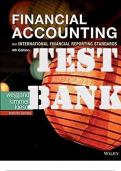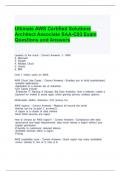Examen
TEST BANK for Financial Accounting with International Financial Reporting Standards (IFRS) 4th Edition by Jerry Weygandt & Paul Kimmel | Complete 15 Chapters
- Cours
- Établissement
- Book
TEST BANK for Financial Accounting with International Financial Reporting Standards (IFRS) 4th Edition by Jerry Weygandt & Paul Kimmel. ISBN: (Complete 15 Chapters).
[Montrer plus]





